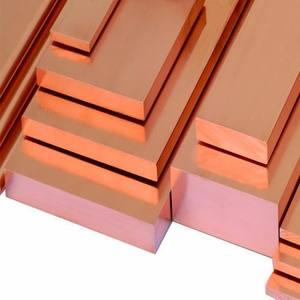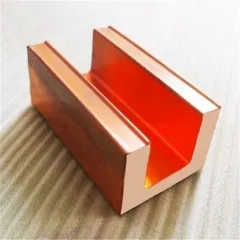Professional and high-quality metal alloys, ceramic products and concrete additives | RBOSCHCO
PRODUCT PARAMETERS
Description
Overview of Copper Extrusion
Copper extrusion is the solid straight strip with a particular cross-sectional shape and size after plastic processing materials with specific strength and toughness. Special-shaped copper bars are about conventional copper bars. The cross-sectional form is not square or rectangle-shaped. There are various shapes, such as “L” type, “T” type, trapezoidal type, and multilateral polygonal type. Most of them are based on the manufacturer’s specific product design requirements.
Advantages of Copper Extrusion
Copper extrusions have great electric conductivity, thermal conductivity, deterioration resistance and processability, smooth surface area without cord illustration, exact dimension, high mechanical homes, high copper web content, reduced oxygen web content, thick framework, and cost-free supply size.
The surface of the copper profile has a layer of oxidation-resistant, corrosion-resistant copper layer, which can maintain a stable structure during application and is not easy to corrode.
Mechanical properties and good properties: copper extrusions have good mechanical properties and sound properties, which can meet the needs of different applications.
Price stability: the price of copper extrusions is determined by the market, the market reflects the value of copper extrusions as tangible goods-related services. Copper on the market can bring significant benefits to people’s lives, and its service costs have become more apparent, so the price has become more reasonable.
Parameter table of Copper Extrusion
The elemental content of raw materials in each grade is as following
|
Item |
T1 |
C11000 |
C10200 |
C10300 |
C12000 |
C12200 | |
|
Element content |
Cu+Ag(≥) |
99.95 |
99.9 |
99.97 |
99.95 |
99.9 |
99.9 |
|
P(≤) |
0.001 |
0.002 |
0.002 |
0.004-0.012 |
0.015-0.04 | ||
|
Bi(≤) |
0.001 |
0.001 |
0.001 |
0.001 |
0.002 |
0.002 | |
|
Sb(≤) |
0.002 |
0.002 |
0.002 |
0.002 |
0.002 |
0.002 | |
|
As(≤) |
0.002 |
0.002 |
0.002 |
0.002 |
0.002 |
0.005 | |
|
Fe(≤) |
0.005 |
0.005 |
0.004 |
0.004 |
0.01 |
0.05 | |
|
Ni(≤) |
0.002 |
0.005 |
0.002 |
0.002 |
0.005 |
0.01 | |
|
Pb(≤) |
0.003 |
0.005 |
0.003 |
0.004 |
0.005 |
0.005 | |
|
Sn(≤) |
0.002 |
0.002 |
0.002 |
0.002 |
0.002 |
0.01 | |
|
S(≤) |
0.005 |
0.005 |
0.004 |
0.004 |
0.005 |
0.005 | |
|
Zn(≤) |
0.005 |
0.005 |
0.003 |
0.003 |
0.003 |
0.003 | |
|
O(≤) |
0.02 |
0.06 |
0.002 |
0.003 |
0.01 |
0.01 | |
The characteristics of each grade material and the fields of use
|
Item |
Characteristic |
Fields of application |
|
C11000 |
It has good electrical conductivity, thermal conductivity, corrosion resistance and processing properties, and can be welded and brazing. Impurities containing reduced electrical and thermal conductivity are small, and trace amounts of oxygen have little effect on electrical conductivity, thermal conductivity and processing properties, but it is easy to cause “hydrogen disease”, and it is not easy to process (annealing, welding, etc.) and use in a high temperature (such as 370 °C) reducing atmosphere. |
Used in electrical, thermally conductive and corrosion-resistant equipment. Such as: wires, cables, conductive screws, detonators for blasting, chemical evaporators, storage devices and various pipelines |
|
C10200、C10300 |
It has high purity, excellent electrical and thermal conductivity, no “hydrogen disease” or very little “ammonia disease” (no hydrogen embrittlement), good processing performance and welding, corrosion resistance and cold resistance |
It is mainly used as electric vacuum instrumentation devices, various hardware products, lamps, pipe fittings, zippers, plaques, rivets, springs, settlement filters, etc |
|
C12000 |
Its welding performance and cold bending performance are good, generally no “hydrogen disease” tendency, can be processed and used in a reducing atmosphere, but not suitable for processing and use in an oxidizing atmosphere. The residual phosphorus content of C12000 is less than that of C12200, so its electrical and thermal conductivity is higher than that of C12200. |
It is mainly used in pipes, but can also be supplied as plates, strips or rods and wires. Used as gasoline or gas transmission pipes, drain pipes, condensation pipes, mine pipes, condensers, evaporators, heat exchangers, train car parts. |
|
C12200 |
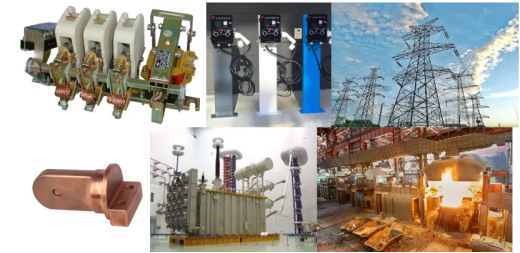
Application of copper extrusion
Application of Copper Extrusion
In the field of power, copper extrusions are used as conductors for cords and cables due to their excellent electric conductivity and rust resistance. In the field of light market, copper and its alloys are used in the manufacture of a range of light commercial items, such as brass, maritime brass, bronze, phosphor bronze, and white copper. In the field of equipment production, copper and its alloys are utilized in the manufacture of numerous device components, such as bearings, equipment, pistons, pumps, and more. In the field of building and construction sector, copper and its alloys are used in the manufacture of numerous attractive building products, such as copper plates, copper pipelines, copper home windows, and so on. In the field of protection market, copper and its alloys are used in the manufacture of different armed forces tools and tools, such as storage tanks, competitor jets, battleships, and more.
On top of that, copper extrusions are additionally made use of as a range of overview resources, such as cable television rolled steel, and so on, along with made use of resistance welding resources.
The copper account is a flexible product in various areas that can play its distinct benefits.
Production Method of Copper Extrusion
- Raw Material Preparation High-purity copper ingots are selected as the starting material. These ingots are first inspected for quality, and any impurities are removed. The copper may be alloyed with small amounts of other elements like zinc or tin to enhance specific properties, depending on the application requirements.
- Heating: The prepared copper billets are heated in a furnace. The heating temperature is carefully controlled, usually in the range of 600 – 900°C, depending on the copper alloy composition. This heating softens the copper, making it easier to extrude.
- Extrusion: The heated billet is placed into an extruder. The extruder uses a powerful hydraulic press to push the billet through a die. The die has a pre-designed orifice shape, which imparts the desired cross-sectional shape to the copper as it is forced through, such as round, square, or complex profiles. The extrusion speed is also regulated to ensure uniform quality.
- Cooling and Straightening: After extrusion, the hot copper product is rapidly cooled, often by water quenching. This helps to fix its shape and improve its mechanical properties. Subsequently, it is passed through straightening machines to correct any bends or deformations that may have occurred during the extrusion process.
Company Profile
RBOSCHCO is a trusted global chemical material supplier & manufacturer with over 12-year-experience in providing super high-quality chemicals and nanomaterials, including boride powder, nitride powder, graphite powder, sulfide powder, 3D printing powder, etc.The company has a professional technical department and Quality Supervision Department, a well-equipped laboratory, and equipped with advanced testing equipment and after-sales customer service center.If you are looking for high-quality Copper Extrusion, please feel free to contact us or click on the needed products to send an inquiry.
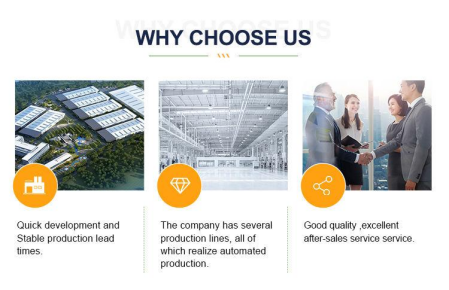
Storage Condition of Copper Extrusion
Store in a dry environment. The relative humidity should generally be kept below 60% to prevent oxidation and corrosion.
The temperature should be kept between 5°C and 35°C to avoid thermal stress. – Keep the storage area clean and well-ventilated, away from dust and corrosive substances like acids and alkalis.
Stack the copper extrusion properly with spacers to prevent scratches and deformation, and it’s better to cover it with a protective film or material.

Packing of Copper Extrusion
We have many different kinds of packing which depend on the quantity.
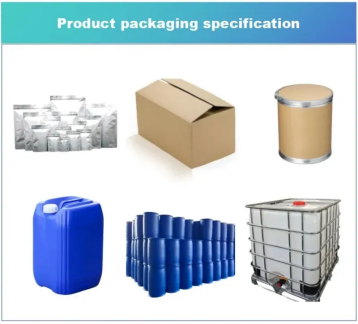
Payment Methods of Copper Extrusion
L/C, T/T, Western Union, Paypal, Credit Card etc.
Shipment of Copper Extrusion
By sea, by air, by express as soon as possible once payment receipt
5 FAQs of Copper Extrusion
Q1
What are the common types of copper extrusions?
Answer: There are many types of copper extruded materials, the common ones include copper rods, copper tubes, copper rows, copper strips, etc. Different types of copper extrusions have different cross-sectional shapes and sizes to meet application needs in different fields.
Q2
What is the electrical and thermal conductivity of copper extrusions?
Answer: Copper extrusions have excellent electrical and thermal conductivity, making them an ideal material for electrical and thermal conductivity fields. Its electric conductivity is 2nd just to silver, and its thermal conductivity is likewise outstanding, making copper extrusions extensively made use of in cables and cable televisions, bus air ducts, radiators and various other areas.
Q3
What is the strength and hardness of copper extrusions?
Answer: The strength and hardness of copper extruded materials depend on factors such as its composition, extrusion process and subsequent processing. By optimizing the extrusion process and subsequent processing, the strength and hardness of copper extrusions can be improved to meet application requirements in specific fields.
Q4
How to care and maintain copper extrusions?
Answer: The care and maintenance of copper extruded materials mainly includes regular cleaning, moisture-proofing and anti-corrosion, and avoiding mechanical damage. During use, avoid contact with sharp objects to prevent scratches, and keep its surface dry to prevent corrosion. For copper extrusions that have been exposed to moisture for a long time, anti-rust oil or plastic spraying can be applied to prevent oxidation.
Q5
Can copper extrusions be recycled and reused?
Answer: Yes, copper extrusions can be recycled and reused. Scrap copper extruded materials can be processed through processes such as smelting and refining to remove impurities and oxides to obtain pure copper liquid, which can then be re-extruded into new copper extruded materials. Recycling and reusing copper extruded materials is not only beneficial to resource conservation and environmental protection, but also reduces production costs.
REQUEST A QUOTE
RELATED PRODUCTS
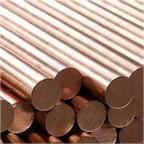
Customized Size Oxygen-Free Copper Rod Low Oxygen Content for Superior Conductivity

Sticks Phosphor Copper Brazing Alloy Welding Rods BCup-2
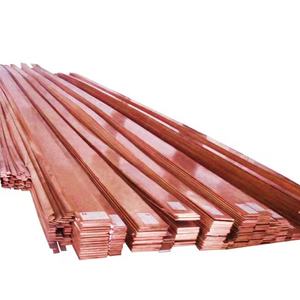
Billow Hot Selling C11000 C1100 99.95% Pure Busbar Copper Rod Square Flat Round Brass Copper Bars
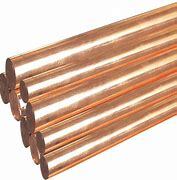
Factory Wholesale Earth Rod Hardware with Good Quality Copper Pole Line Hardware
